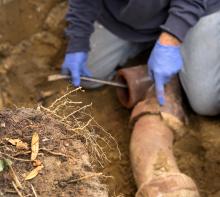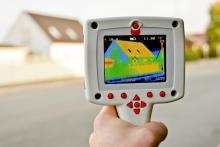
Whether it’s dust, cigarette smoke, household cleaners, mold, mildew, naturally occurring radon gasses or other particulates, the air inside our homes can sometimes be harmful. When statistics say people spend as much as 80-90% of their time indoors, air quality is definitely worth paying attention to.
Ways You Can Improve Air Quality
There are many ways you can reduce indoor pollutants and the impact they may have on your health. Common sense solutions such as stopping the pollutant at its source, or opening windows to help ventilate your home aren’t always an option – especially when it’s difficult to locate the cause. Sometimes it takes a professional to accurately identify the source of a problem with a thorough system inspection and test of your air quality.
Your best, and most often effective option, is to take steps to purify your indoor air. This can be done in a few ways, using different methods and systems:
Duct Cleaning – Since ductwork is responsible for distributing heated and conditioned air throughout your home, it makes sense that any dust or particulates floating around inside the ductwork will be transported from room to room as well. Having your air ducts cleaned can remove a substantial amount of pollutants from your system and keep them from circulating throughout your home.
Air Duct Sealing – Leaky ducts allow contaminants to be pulled into the air stream and circulated throughout your home. Dirty ducts are usually the result of leakage and poor air filtration. Sealing duct joints, seams, and areas of leakage prevents dirt build-up.
Air Filtration - If dust and other allergens are your problem, make it a practice to regularly change your air filter – this can have a big impact on your symptoms. Air filters should be changed every 30 days, or when they appear dirty. If you are using a standard filter purchased at your local hardware store, you might consider upgrading to a model with a higher efficiency rating. Standard filters will typically only trap larger particles like dust and pet hair, while more efficient filters can trap pollens and pet dander.
Air Cleaner – Having an air purifier can help you remove more than 95% of allergens and other contaminants from the air. Using ionization air purifiers use a polarized charge to directly capture airborne matter leaving behind air that is fresher and cleaner.
UV Lamps – Ultraviolet Lamps, also known as UV germicidal lamps, require professional installation by a qualified HVAC technician. While UV lamps do not remove particles from the air, they are excellent at killing dangerous microorganisms such as airborne viruses and some bacteria.
If you have concerns about your indoor air, consider having an air quality analysis performed by a professional. Doing so will help you identify areas that need attention and the best methods you can employ to resolve them.
Contact Lawton’s indoor air quality specialists, Pippin Brothers, today to learn more about how you can improve the quality of your indoor air.








